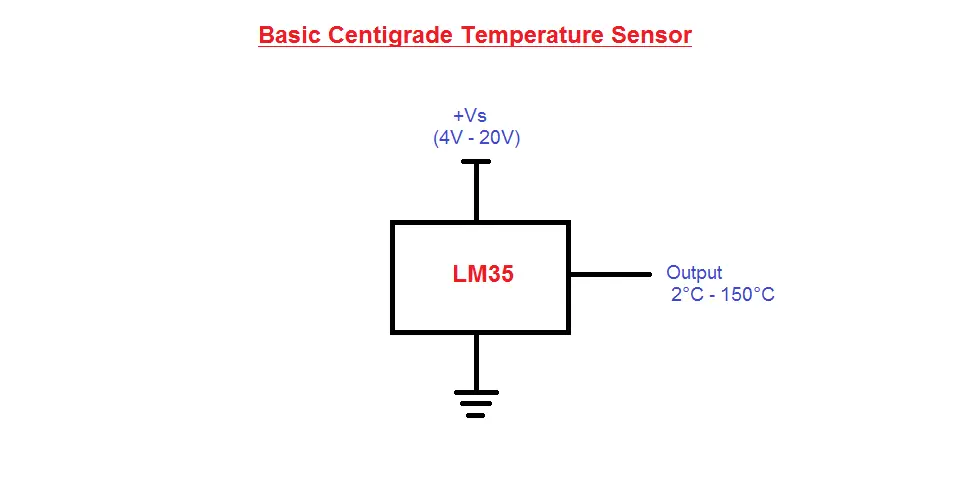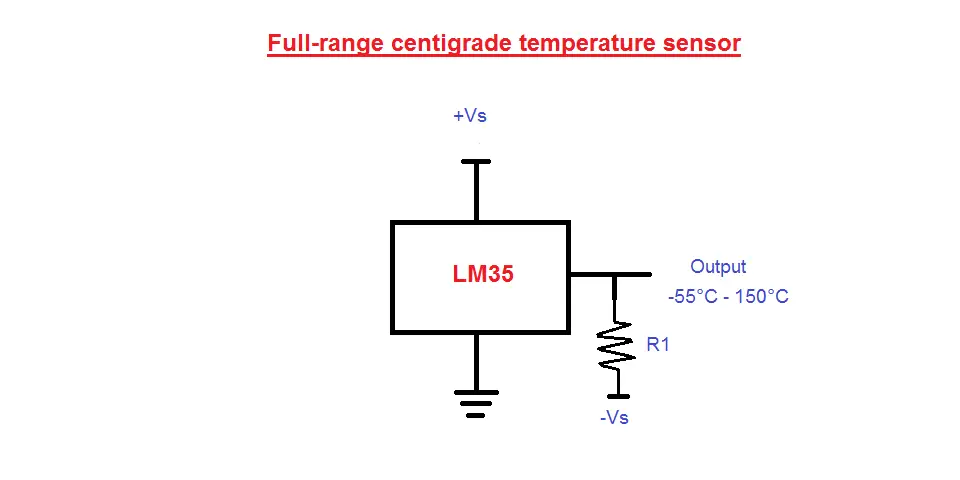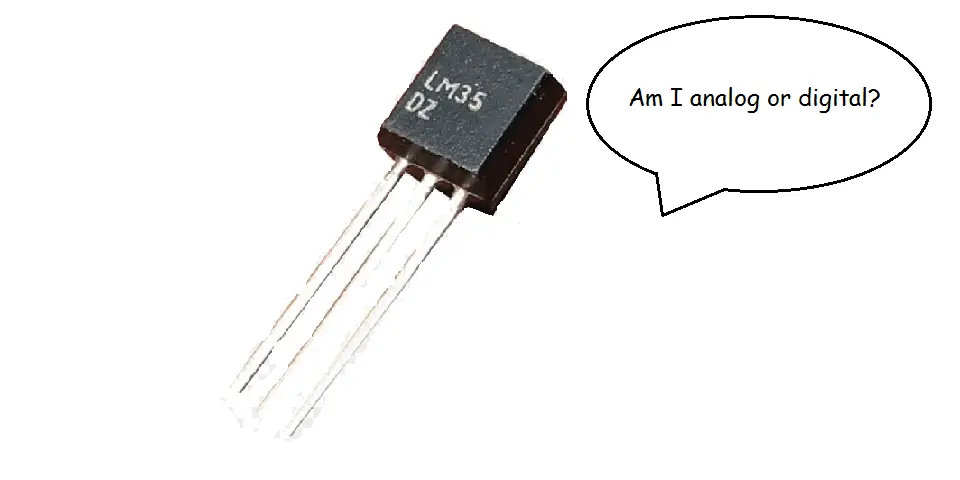The LM35 is a sensor used to measure temperature. It provides a voltage output that is linearly proportional to the temperature (in centigrade).
Output of LM35 analog or digital?
The output of a LM35 is analog as it provides a continuous output signal that varies in value over time.. The output of the LM35 is an analog voltage that is linearly proportional to the centigrade temperature. The LM35 is able to detect temperatures that start as low as −55°C and go up to temperatures as high as 150°C with a 0.5°C accuracy (when operated at optimal temperatures).
Why is the output signal of the LM35 analog and not digital?
So why is the output of the LM35 analog and not digital? To better understand this we need to learn about analog and digital signals. When it comes to electrical and electronic signals, they are split into two major categories; Analog and Digital.
An analog signal is represented by a continuous stream of data that sits within minimum and maximum values. The analog signal can be any value within this range. How much it changes is determined by its resolution. For example, an analog signal could be current that has a minimum value of 0A, and a maximum value of 10A. The value of current can anything within this range (for example 5.1A).
A digital signal on the other hand is represented by discrete values of data. Digital signals can only have two values which are either 0V (GND), or Vcc (the value of the supply voltage). A binary value of 0 is used to represent 0V, and a binary of 1 is used to represent the supply voltage.
A LM35 output is analog because the signal (voltage) is presented in a continuous form and not discrete. It has a minimum value, and a maximum where the voltage can be any value within that range.
LM35 output analog voltage
The analog signal provided at the output of the LM35 changes at a linear scale factor of +10mV/°C. This information tells us that for 1°C increase in temperature, the voltage at the output of the LM35 increases by 10mV. If the temperature decreases by 1°C, the voltage at the output decreases by 10mV. To acquire the temperature reading, you take the reading at the output of the LM35 and divide it by 10mV. Note, the voltages will need to be in milli-volts.
For example, if we read a voltage value of 1.25V at the output, this first needs to be converted to a millivolt reading (which is easily done by multiplying it by 1000). This then gives a value of 1250mV. Then we divide this value by 10mV which gives us a temperature reading of 125°C.
Negative temperatures will yield negative voltages at the output (as long as they’re within the sensing range of the LM35). If the sensor is reading -100mV at its output, this tells us the temperature is -10°C. Follow the same convention above to acquire negative temperatures.
What is the range of the output of a LM35?
The LM35 has an output that ranges from -55°C to 150°C. However, the range at the output is determined by how it is configured in a circuit. There are two circuit configurations for a LM35 which include; basic and full-range.
LM35 basic output configuration
When the LM35 is connected in the basic configuration, its output is limited between 2°C and 150°C. Below is the circuit connection of the LM35 in its basic setup.

LM35 full-range output configuration
Connecting the LM35 in its full-range configuration allows it to detect temperatures that range from -55°C to 150°C (its full capability). The full-range setup for the LM35 can be seen below.






